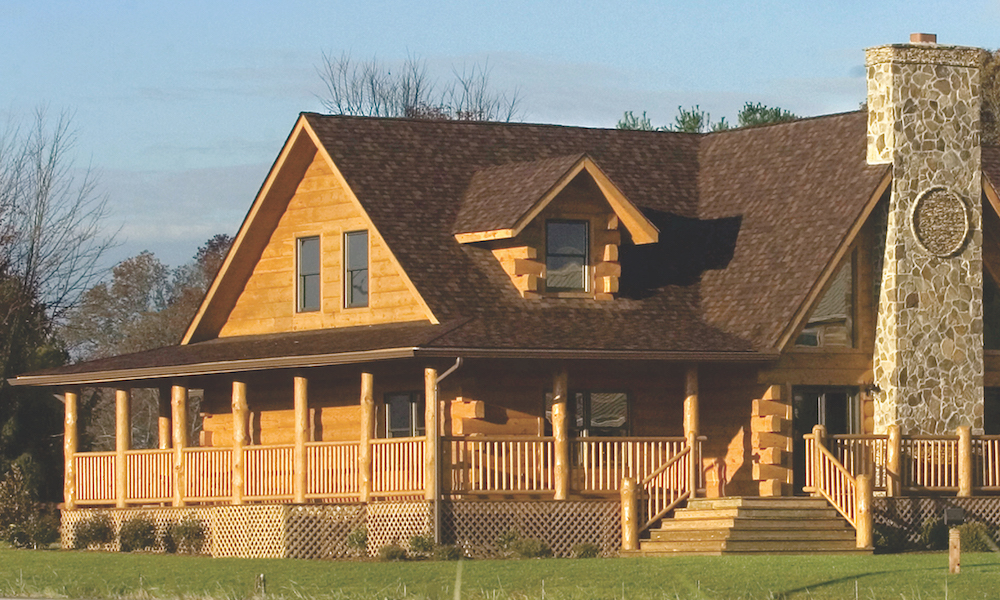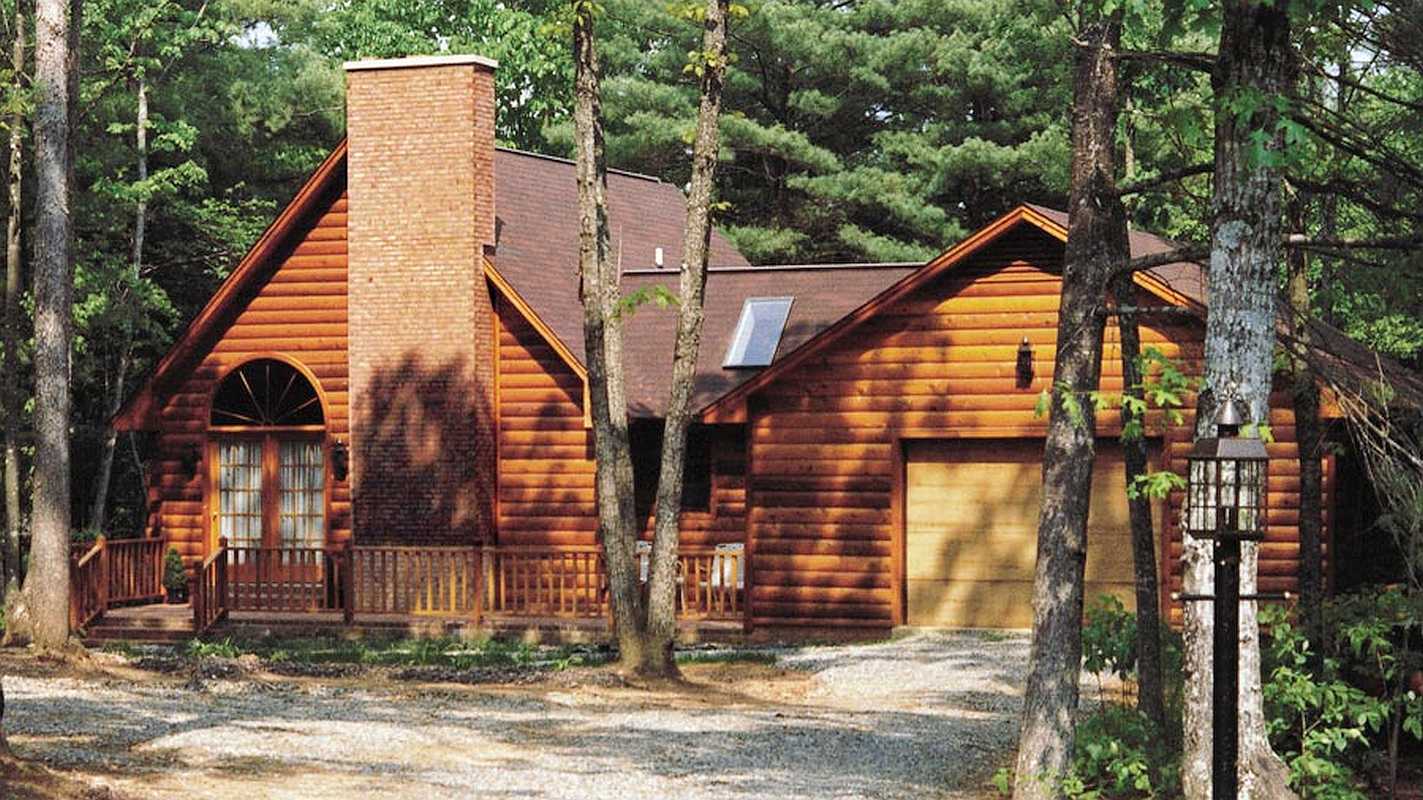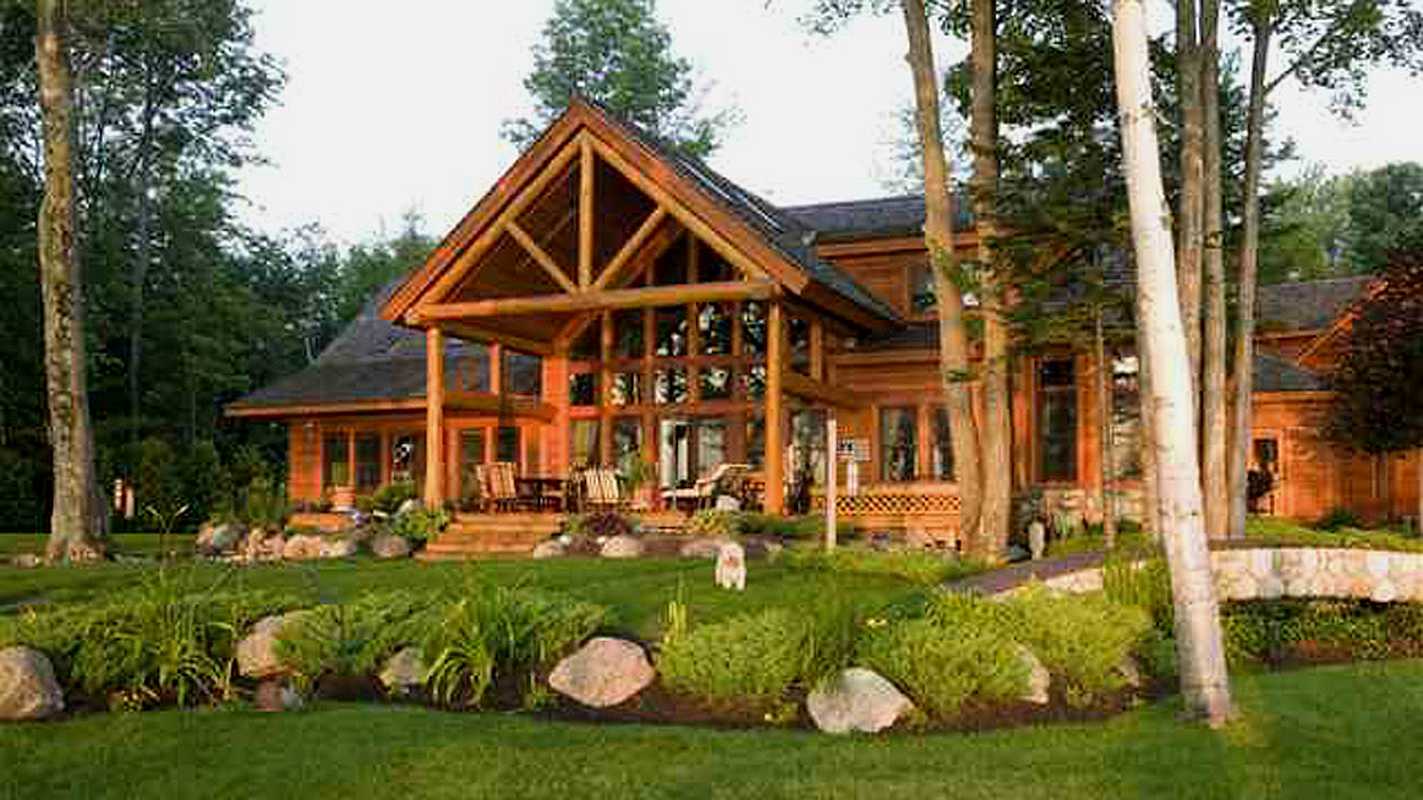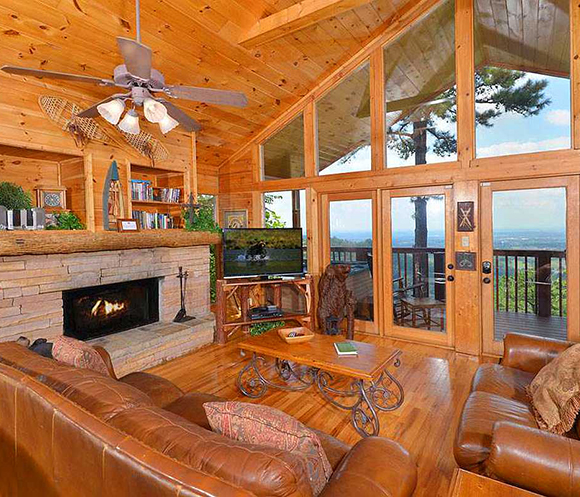Heating is a prime concern for log cabin dwellers. But cooling a log home in the summer months is just as important, especially if your home is in a hot-arid or hot-humid region of the country.
Wood has natural insulating properties, which gives log homes an advantage when it comes to both heating and cooling. But when temperatures and humidity soar, you may need additional strategies to keep your home comfortable.
Passive cooling methods—like good insulation and smart landscaping—can help keep your home cooler. So can active cooling strategies like ceiling fans and central air conditioning.
Keep reading for tips on how to keep your log cabin cool through the sweltering summer months.
Insulate the roof.
In traditional stick-built homes, all four walls plus the attic are usually outfitted with loose-fill insulation, such as cellulose, fiberglass, or mineral wool.
In log homes, the log walls themselves provide both structure and insulation. But there are extra measures you can take to insulate a log cabin, such as insulating the roof.
If you have (or plan to install) a tongue-and-groove ceiling, your builder or contractor can install an insulating material between the joists/framing behind the ceiling. This additional insulation can keep your home significantly cooler in summer and warmer in winter.
eLoghomes offers an optional tongue-and-groove upgrade with our log home kit packages. We can also increase the roof overhangs on most of our log home models. Extending the roofline provides additional shade, which can help keep your home cooler in the summer months.
Add a porch or deck.

Another important but often overlooked benefit of covered decks and porches is the additional shade they provide. The overhang prevents direct sunlight from reaching the exterior walls of your home for more hours of the day. This can help keep indoor temperatures cooler.
A deck or porch can add hundreds of square feet of living space to your home—perfect for al fresco dining, entertaining, and relaxing with family and friends.
Dozens of eLoghomes log cabin kits come standard with a deck and/or porch. We can also add a custom outdoor space to your home with optional upgrades, including handcrafted posts and rails.
Install an air conditioning system.
For those who live in hot or humid climates like the Desert Southwest or the Deep South, air conditioning may be a non-negotiable necessity.
If you have a large home or if your region experiences hot weather for 5-6 months or more each year, a central air conditioning system may make the most sense.
Ductless mini-split heat pumps are increasingly popular options. These wall-mounted units allow you to cool a single room or a smaller space within the home, helping you ration energy use. Another option is a window unit, a budget-friendly cabin air conditioner option that works well in small homes or for cooling a single room.
The best time to decide on a cooling system is during initial construction. Talk to your builder or general contractor about the best option for your home, based on your needs. If you’re considering air conditioning for an existing log cabin, make sure your HVAC specialist has experience with log home installations.
Install weather-wise windows and doors.
Energy-efficient windows and doors are essential for log cabin homes. Well-designed doors and windows prevent cool air from escaping the home in the summer and keep heat in during the winter.
You’ll want to look for a company that is focused on solid engineering and durability, as well as meets your aesthetic needs. Check for the ENERGY STAR® logo or National Fenestration Rating Council (NFRC) logo—windows and doors with these labels have met or exceeded several key criteria in energy efficiency, such as the ability to block heat caused by sunlight.
Window coverings can also help keep interior spaces cooler. According to the U.S. Department of Energy, around 76% of sunlight that falls on standard double-pane windows enters the home to become heat. Investing in window coverings—especially on south and west-facing windows—can reduce heat gain in the summer months.
Get a dehumidifier.
High humidity makes it harder for the body to cool itself through evaporation. This adds to the misery of an already-hot day. If you live in a humid subtropical climate (the Southeastern US, for example), you already know that humidity is enemy number one during the summer months.
A dehumidifier can keep you more comfortable, even without additional measures. Removing even a fraction of the humidity inside your home will make ceiling fans and other air circulation devices work more effectively.
Get smart about landscaping.

Well-executed landscaping is about more than aesthetics. It’s also an effective way to keep your home cooler in summer.
Shade trees and shrubs can keep the ground around the perimeter of your home significantly cooler—up to 25 degrees.
Just be sure to set back plants and shrubs at least 5 feet from the exterior walls of your home, and avoid climbing vines. Plants and shrubs hold on to moisture and increase humidity levels, which can damage log walls and lead to wood rot and insect infestation. Excessive moisture can also lead to the formation of damaging mold and mildew.
Seal air leaks.
Regardless of your log home’s construction style (chinked, post and beam, etc.), it’s vital to ensure a weather-tight system. Seal any gaps or cracks between logs, use weather stripping around doors, and stop air infiltration around windows with caulking.
Keeping Your Log Home Cool Starts with Solid Construction

eLoghomes is a leading manufacturer of energy-efficient log home kits. Our Eastern White Pine logs are natural insulators that help maintain comfortable indoor temperatures. It’s why one of our most popular states is Florida!
Efficiency is one of our top priorities. Our 6-Point Weatherlink™ System was a top performer in preventing air infiltration in a NAHB Research Center study. Our energy-efficient building materials can save you thousands over the lifetime of your home.
Learn more about our design advantages and browse our extensive catalog of more than 200 log home models, with floor plans ranging from 400 to 4,000+ square feet.

